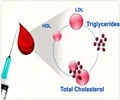Many more relatively young people will probably be prescribed cholesterol-lowering drugs as a result of guidelines issued last year, but a new study
Many more relatively young people will probably be prescribed cholesterol-lowering drugs as a result of guidelines issued last year, but a new study cautions that the effects of those medications in that age group aren't well understood. Under the 1993 National Cholesterol Education Program guidelines, about 15 million Americans between the ages of 20 and 79 would have been considered candidates taking statin group of drugs for the primary prevention of cardiovascular problems. But the guidelines revised last year expand the number of potential patients to 36 million, an increase of 140 percent.
"We're urging caution," say Donald Fedder, a University of Maryland pharmacologist and lead author of the study. Statins are safe in the short term, but doctors "need to follow their patients over a period of time to watch what may happen" as they take the drugs. The compounds may cause abnormal liver function, and at least one version of the pills, which was recalled, was linked to kidney failure.The new guidelines combine the growing realization that elevated cholesterol early in life can cause deadly cardiovascular consequences later, and convincing evidence that statin drugs are highly effective at controlling runaway low-density lipoprotein (LDL), the so-called "bad" form of the blood fat.
But studies that have proved the efficacy of statins have covered people between their 40s and early 70s, Fedder's group says. As many as 40 percent of those now eligible to take the drugs fall outside that age range. The new guidelines also force a significant shift in the proportion of men and women who'll probably receive cholesterol-lowering medication. Under the earlier recommendations, the two sexes were roughly equal in eligibility. Now, men make up 55 percent of the pool and women 45 percent.











